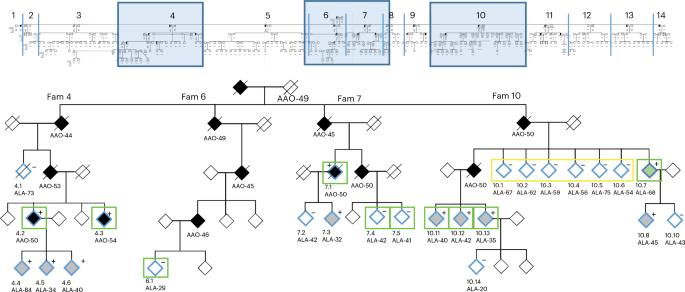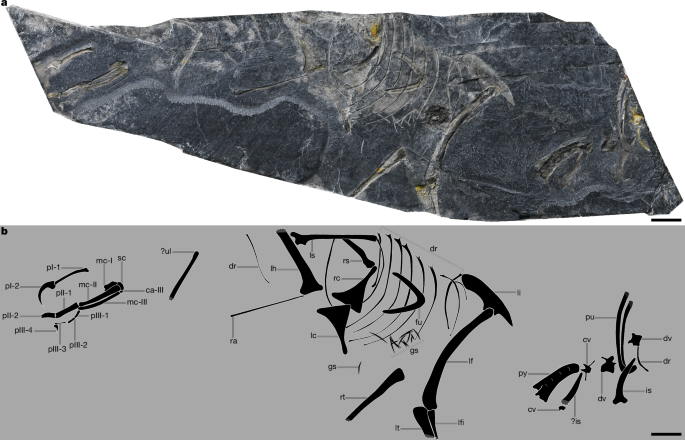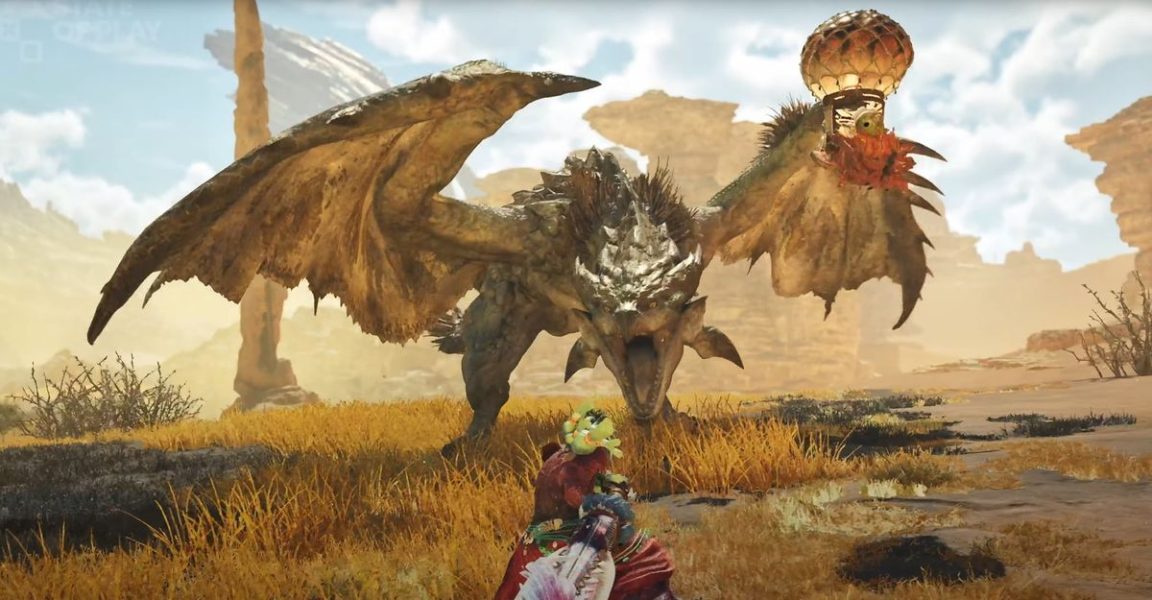Longitudinal analysis of a dominantly inherited Alzheimer disease mutation carrier protected from dementia – Nature.com

Thank you for visiting nature.com. You are using a browser version with limited support for CSS. To obtain
the best experience, we recommend you use a more up to date browser (or turn off compatibility mode in
Internet Explorer). In the meantime, to ensure continued support, we are displaying the site without styles
and JavaScript.Advertisement
Nature Medicine
(2025)Cite this article
2380 Accesses1 Citations449 AltmetricMetrics detailsWe conducted an in-depth longitudinal study on an individual carrying the presenilin 2 p.Asn141Ile mutation, traditionally associated with dominantly inherited Alzheimer’s disease (AD), who has remarkably remained asymptomatic past the expected age of clinical onset. This study combines genetic, neuroimaging and biomarker analyses to explore the underpinnings of this resilience. Unlike typical progression in dominantly inherited AD, tau pathology in this case was confined to the occipital region without evidence of spread, potentially explaining the preservation of cognitive functions. Genetic analysis revealed several variants that, although not previously associated with protection against AD, suggest new avenues for understanding disease resistance. Notably, environmental factors such as significant heat exposure and a unique proteomic profile rich in heat shock proteins might indicate adaptive mechanisms contributing to the observed phenotype. This case underscores the complexity of Alzheimer’s pathology and suggests that blocking tau deposition could be a promising target for therapeutic intervention. The study highlights the need for further research to identify and validate the mechanisms that could inhibit or localize tau pathology as a strategy to mitigate or delay the onset of Alzheimer’s dementia.This is a preview of subscription content, access via your institution
Access Nature and 54 other Nature Portfolio journals
Get Nature+, our best-value online-access subscription
24,99 € / 30 days
cancel any timeSubscribe to this journal
Receive 12 print issues and online access
We are sorry, but there is no personal subscription option available for your country.Buy this articlePrices may be subject to local taxes which are calculated during checkoutData and study samples (for example, CSF, plasma) supporting the findings of this study are available on request and will follow the policies of the DIAN (https://dian.wustl.edu), which comply with the guidelines established by the Collaboration for Alzheimer’s Prevention. De-identified whole-genome sequencing data will be made available through NIAGADS as part of the DIAN data-sharing process.The codes used in this study, including those applied for segregation analysis, are openly accessible at the following repository: https://github.com/NeuroGenomicsAndInformatics/escapee.Bateman, R. J. et al. Clinical and biomarker changes in dominantly inherited Alzheimer’s disease. N. Engl. J. Med. 367, 795–804 (2012).Article
PubMed
PubMed Central
CAS
Google Scholar
Tang, M. et al. Neurological manifestations of autosomal dominant familial Alzheimer’s disease: a comparison of the published literature with the Dominantly Inherited Alzheimer Network observational study (DIAN-OBS). Lancet Neurol. 15, 1317–1325 (2016).Article
PubMed
PubMed Central
Google Scholar
Ryman, D. C. et al. Symptom onset in autosomal dominant Alzheimer disease: a systematic review and meta-analysis. Neurology 83, 253–260 (2014).McDade, E. et al. Longitudinal cognitive and biomarker changes in dominantly inherited Alzheimer disease. Neurology 91, e1295–e1306 (2018).Article
PubMed
PubMed Central
Google Scholar
Rabinovici, G. D. Dominantly inherited Alzheimer’s disease: a compass for drug development. Nat. Med. https://doi.org/10.1038/s41591-021-01434-2 (2021).Salloway, S. et al. A trial of gantenerumab or solanezumab in dominantly inherited Alzheimer’s disease. Nat. Med. https://doi.org/10.1038/s41591-021-01369-8 (2021).Morris, J. C. et al. Developing an international network for Alzheimer research: the Dominantly Inherited Alzheimer Network. Clin. Investig. (Lond.) 2, 975–984 (2012).Article
PubMed
CAS
Google Scholar
Arboleda-Velasquez, J. F. et al. Resistance to autosomal dominant Alzheimer’s disease in an APOE3 Christchurch homozygote: a case report. Nat. Med. 25, 1680–1683 (2019).Article
PubMed
PubMed Central
CAS
Google Scholar
Kriebs, A. Genetic protection from early-onset familial Alzheimer’s disease. Nat. Aging 3, 635 (2023).Article
PubMed
Google Scholar
Lopera, F. et al. Resilience to autosomal dominant Alzheimer’s disease in a Reelin-COLBOS heterozygous man. Nat. Med. 29, 1243–1252 (2023).Article
PubMed
PubMed Central
CAS
Google Scholar
Quiroz, Y. T. et al. APOE3 Christchurch heterozygosity and autosomal dominant Alzheimer’s Disease. New Engl. J. Med. 390, 2156–2164 (2024).Article
PubMed
CAS
Google Scholar
Nochlin, D., Bird, T. D., Nemens, E. J., Ball, M. J. & Sumi, S. M. Amyloid angiopathy in a Volga German family with Alzheimer’s disease and a presenilin-2 mutation (N141I). Ann. Neurol. 43, 131–135 (1998).Article
PubMed
CAS
Google Scholar
Bird, T. D. et al. Familial Alzheimer’s disease in American descendants of the Volga Germans: probable genetic founder effect. Ann. Neurol. 23, 25–31 (1988).Article
PubMed
CAS
Google Scholar
Rogaev, E. I. et al. Familial Alzheimer’s disease in kindreds with missense mutations in a gene on chromosome 1 related to the Alzheimer’s disease type 3 gene. Nature 376, 775–778 (1995).Article
PubMed
CAS
Google Scholar
Hsu, S. et al. Systematic validation of variants of unknown significance in APP, PSEN1 and PSEN2. Neurobiol. Dis. 139, 104817 (2020).Article
PubMed
PubMed Central
CAS
Google Scholar
Hsu, S. et al. Discovery and validation of autosomal dominant Alzheimer’s disease mutations. Alzheimers Res. Ther. 10, 67 (2018).Article
PubMed
PubMed Central
Google Scholar
Reiswig, G. The Thousand Mile Stare: One Family’s Jouney Through the Struggle and Science of Alzheimer’s (Nicholas Brealey, 2010).Storandt, M., Balota, D. A., Aschenbrenner, A. J. & Morris, J. C. Clinical and psychological characteristics of initial cohort of the dominantly inherited Alzheimer Network (DIAN). Neuropsychology https://doi.org/10.1037/neu0000030 (2014).Shirk, S. D. et al. A web-based normative calculator for the uniform data set (UDS) neuropsychological test battery. Alzheimers Res. Ther. 3, 1–9 (2011).Article
Google Scholar
Guerreiro, R. et al. TREM2 variants in Alzheimer’s disease. New Engl. J. Med. 368, 117–127 (2013).Article
PubMed
CAS
Google Scholar
Benitez, B. A. et al. TREM2 is associated with risk of Alzheimer disease in Spanish population. Neurobiol. Aging 34, 1711.e15 (2013).Article
PubMed
CAS
Google Scholar
Sims, R. et al. Rare coding variants in PLCG2, ABI3, and TREM2 implicate microglial-mediated innate immunity in Alzheimer’s disease. Nat. Genet. 49, 1373–1384 (2017).Article
PubMed
PubMed Central
CAS
Google Scholar
Song, W. et al. Alzheimer’s disease-associated TREM2 variants exhibit either decreased or increased ligand-dependent activation. Alzheimers Dement. 13, 381–387 (2017).Article
PubMed
Google Scholar
Poorkaj, P. et al. Tau is a candidate gene for chromosome 17 frontotemporal dementia. Ann. Neurol. 43, 815–825 (1998).Article
PubMed
CAS
Google Scholar
Johnson, E. C. B. et al. Cerebrospinal fluid proteomics define the natural history of autosomal dominant Alzheimer’s disease. Nat. Med. 29, 1979–1988 (2023).Article
PubMed
PubMed Central
CAS
Google Scholar
Benzinger, T. L. S. et al. Regional variability of imaging biomarkers in autosomal dominant Alzheimer’s disease. Proc. Natl Acad. Sci. USA 110, E4502–E4509 (2013).Article
PubMed
PubMed Central
CAS
Google Scholar
Spillantini, M. G. & Goedert, M. Tau pathology and neurodegeneration. Lancet Neurol. 12, 609–622 (2013).Article
PubMed
CAS
Google Scholar
La Joie, R. et al. Associations between [18F]AV1451 tau PET and CSF measures of tau pathology in a clinical sample. Neurology 90, e282-e290 (2018).PubMed
PubMed Central
Google Scholar
Singleton, E. et al. Heterogeneous distribution of tau pathology in the behavioural variant of Alzheimer’s disease. J. Neurol. Neurosurg. Psychiatry jnnp-2020-325497 (2021).Jack, C. R. et al. Longitudinal tau PET in ageing and Alzheimer’s disease. Brain 141, 1517–1528 (2018).Article
PubMed
PubMed Central
Google Scholar
Frontzkowski, L. et al. Earlier Alzheimer’s disease onset is associated with tau pathology in brain hub regions and facilitated tau spreading. Nat. Commun. 13, 4899 (2022).Article
PubMed
PubMed Central
CAS
Google Scholar
Gordon, B. A. et al. Tau PET in autosomal dominant Alzheimer’s disease: relationship with cognition, dementia and other biomarkers. Brain 142, 1063 (2019).Article
PubMed
PubMed Central
Google Scholar
Brier, M. R. et al. Tau and Aβ imaging, CSF measures, and cognition in Alzheimer’s disease. Sci. Transl. Med. 8, 338ra66 (2016).Article
PubMed
PubMed Central
Google Scholar
Sepulveda-Falla, D. et al. Distinct tau neuropathology and cellular profiles of an APOE3 Christchurch homozygote protected against autosomal dominant Alzheimer’s dementia. Acta Neuropathol. 144, 589–601 (2022).Article
PubMed
PubMed Central
CAS
Google Scholar
Mathys, H. et al. Single-cell multiregion dissection of Alzheimer’s disease. Nature 632, 858–868 (2024).Article
PubMed
PubMed Central
CAS
Google Scholar
Zipf, G., Chiappa, M., Porter, K. S., Ostchega, Y., Lewis, B. G. & Dostal, J. National health and nutrition examination survey: plan and operations, 1999–2010. Vital Health Stat. 1, 1–37 (2013).
Google Scholar
Depristo, M. A. et al. A framework for variation discovery and genotyping using next-generation DNA sequencing data. Nat. Genet. 43, 491–498 (2011).Article
PubMed
PubMed Central
CAS
Google Scholar
Bellenguez, C. et al. New insights into the genetic etiology of Alzheimer’s disease and related dementias. Nat. Genet. 54, 412–436 (2022).Article
PubMed
PubMed Central
CAS
Google Scholar
McKay, N. S., Gordon, B. A. & Hornbeck, R. C. et al. Positron emission tomography and magnetic resonance imaging methods and datasets within the Dominantly Inherited Alzheimer Network (DIAN). Nat. Neurosci. 26, 1449–1460 (2023).Article
PubMed
PubMed Central
CAS
Google Scholar
Su, Y. et al. Partial volume correction in quantitative amyloid imaging. Neuroimage 107, 55–64 (2015).Article
PubMed
CAS
Google Scholar
Barthélemy, N. R. et al. A soluble phosphorylated tau signature links tau, amyloid and the evolution of stages of dominantly inherited Alzheimer’s disease. Nat. Med. 26, 398–407 (2020).Article
PubMed
PubMed Central
Google Scholar
Download referencesWe acknowledge the altruism of the participants and their families and contributions of the DIAN research and support staff at each of the participating sites for their contributions to this study. This manuscript has been reviewed by DIAN Study investigators for scientific content and consistency of data interpretation with previous DIAN Study publications. Funding information: Data collection and sharing for this project was supported by the Dominantly Inherited Alzheimer Network (grant no. U19AG032438), funded by the National Institute on Aging (NIA), the Alzheimer’s Association (grant no. SG-20-690363-DIAN), the German Center for Neurodegenerative Diseases (DZNE) and the Raul Carrea Institute for Neurological Research (FLENI). Partial support by Research and Development Grants for Dementia from the Japan Agency for Medical Research and Development, AMED grant no. JP22dk0207049, and the Korea Health Technology R&D Project through the Korea Health Industry Development Institute (KHIDI), Spanish Institute of Health Carlos III (ISCIII), Canadian Institutes of Health Research (CIHR), Canadian Consortium of Neurodegeneration and Aging, Brain Canada Foundation and Fonds de Recherche du Québec—Santé.These authors contributed equally: Jorge J. Llibre-Guerra, M. Victoria Fernandez, Nelly Joseph-Mathurin.These authors jointly supervised this work: Carlos Cruchaga, Erik C. B. Johnson, Randall J. Bateman.Washington University in St Louis, St Louis, MO, USAJorge J. Llibre-Guerra, Nelly Joseph-Mathurin, Yan Li, Andrew J. Aschenbrenner, Cyril Pottier, Wendy Sigurdson, Eric McDade, Brian A. Gordon, Tammie L. S. Benzinger, Laura Ibañez, Nico Barthelemy, Matthew Johnson, Jason Hassenstab, Guoqiao Wang, Dan Western, Ciyang Wang, Diana Hobbs, Alisha Daniels, Celeste Karch, John C. Morris, Carlos Cruchaga, Randall J. Bateman, Bryce Baker, Jessica Banks, Nicolas R. Barthélemy, Jamie Bartzel, Randall Bateman, Allison Chen, Charles Chen, Laura Courtney, Alisha J. Daniels, Anne M. Fagan, Shaney Flores, Erin Franklin, Manu Goyal, Emily Gremminger, Cortaiga Hellm, David M. Holtzman, Russ Hornbeck, Laura Ibanez, Kelley Jackson, Gina Jerome, Celeste M. Karch, Sarah Keefe, Deborah Koudelis, Ruijin Lu, Jacob Marsh, Mariana Martin, Parinaz Massoumzadeh, Austin McCullough, Nicole McKay, Matthew Minton, Joyce Nicklaus, Yuzheng Nie, Richard J. Perrin, Christine Pulizos, Jacqueline Rizzo, Edita Sabaredzovic, Jalen Scott, Ashlee Simmons, Karina Skrbec, Jennifer Smith, Jennifer Stauber, Sarah Stout, Charlene Supnet-Bell, Andrei Vlassenko, Qing Wang, Yong Wang, Chengjie Xiong, Xiong Xu, Jinbin Xu, Angela Ziegemeier & Ellen ZiegemeierResearch Center and Memory Clinic, Fundació ACE Institut Català de Neurociències Aplicades – Universitat Internacional de Catalunya (UIC), Barcelona, SpainM. Victoria FernandezEmory University School of Medicine, Atlanta, GA, USAShijia Bian & Kathleen CarterRonald M. Loeb Center for Alzheimer’s Disease, Dept of Genetics and Genomic Sciences, and Nash Family Dept of Neuroscience, Icahn School of Medicine at Mount Sinai, New York, NY, USAAlan E. Renton, Alison M. Goate, Erik C. B. Johnson, Brian Fulton-Howard & Danielle M. PicarelloGrupo de Neurociencias de Antioquia (GNA), Facultad de Medicina, Universidad de Antioquia, Medellín, ColombiaDavid Aguillon, Ana Baena, Yamile Bocanegra, Yudy Milena Leon, Francisco Lopera, Laura Ramirez & Laura SernaInstitute for Neurological Research Fleni, Buenos Aires, ArgentinaRicardo F. Allegri, Patricio Chrem Mendez, Ezequiel Surace & Silvia VazquezNeuroscience Research Australia, Sydney, New South Wales, AustraliaJacob A. Bechara, William S. Brooks, Emma Devenney & Peter R. SchofieldUniversity of Pittsburgh, Pittsburgh, PA, USASarah B. Berman & Snezana IkonomovicDementia Research Centre, UCL Queen Square Institute of Neurology, London, UKDavid M. Cash, Nick C. Fox & Natalie S. RyanMassachusetts General Hospital, Brigham and Women’s Hospital, Harvard Medical School, Boston, MA, USAJasmeer P. Chhatwal & Courtney MaaMayo Clinic in Florida, Jacksonville, FL, USAGregory S. Day & Neill R. Graff-RadfordIndiana University, School of Medicine, Bloomington, IN, USAMartin FarlowGerman Center for Neurodegenerative Diseases (DZNE), Tübingen, GermanySusanne Graber-Sultan, Mathias Jucker, Elke Kuder-Buletta, Christian la Fougère, Christoph Laske, Ulrike Obermueller, Gerald Reischl & Reda TimofejavaiteGoizueta Alzheimer’s Disease Research Center, Emory University, Atlanta, GA, USAEdward D. Huey, Allan I. Levey, Stephen Salloway & Nicholas T. SeyfriedBrain Research Institute, Niigata University, Niigata, JapanTakeshi Ikeuchi, Takanobu Ishiguro & Kensaku KasugaTokyo Metropolitan Institute of Gerontology, Tokyo, JapanKenji IshiiKorea University College of Medicine, Seoul, Republic of South KoreaJae-Hong Lee & Jee Hoon RohGerman Center for Neurodegenerative Diseases, Munich, Munich, GermanyJohannes Levin, Yvonne Rödenbeck & Jonathan VögleinEdith Cowan University, Perth, Western Australia, AustraliaRalph MartinsFlorey Institute, The University of Melbourne, Melbourne, Victoria, AustraliaColin MastersOsaka Metropolitan University, Osaka, JapanHiroshi MoriThe University of Tokyo Hospital, Tokyo, JapanYoshiki NiimiTaub Institute for Research on Alzheimer’s Disease and the Aging Brain, Columbia University Irving Medical Center, New York, NY, USAJames M. NobleDepartment of Neurology, Keck School of Medicine of USC, University of Southern California, Los Angeles, CA, USAJohn RingmanMcGill University, Montreal, Quebec, CanadaPedro Rosa-NetoUniversity of Barcelona, Barcelona, SpainRaquel Sanchez-ValleKobe City Medical Center General Hospital, Kobe, JapanMichio SendaYou can also search for this author in
PubMed Google ScholarYou can also search for this author in
PubMed Google ScholarYou can also search for this author in
PubMed Google ScholarYou can also search for this author in
PubMed Google ScholarYou can also search for this author in
PubMed Google ScholarYou can also search for this author in
PubMed Google ScholarYou can also search for this author in
PubMed Google ScholarYou can also search for this author in
PubMed Google ScholarYou can also search for this author in
PubMed Google ScholarYou can also search for this author in
PubMed Google ScholarYou can also search for this author in
PubMed Google ScholarYou can also search for this author in
PubMed Google ScholarYou can also search for this author in
PubMed Google ScholarYou can also search for this author in
PubMed Google ScholarYou can also search for this author in
PubMed Google ScholarYou can also search for this author in
PubMed Google ScholarYou can also search for this author in
PubMed Google ScholarYou can also search for this author in
PubMed Google ScholarYou can also search for this author in
PubMed Google ScholarYou can also search for this author in
PubMed Google ScholarYou can also search for this author in
PubMed Google ScholarYou can also search for this author in
PubMed Google ScholarYou can also search for this author in
PubMed Google ScholarYou can also search for this author in
PubMed Google ScholarYou can also search for this author in
PubMed Google ScholarYou can also search for this author in
PubMed Google ScholarYou can also search for this author in
PubMed Google ScholarYou can also search for this author in
PubMed Google ScholarJ.J.L.-G. and R.J.B. initiated this work, supervised the study and drafted the manuscript. J.J.L.-G., A.J.A., E.M. and W.S. collected and analyzed the clinical and phenotypic data. N.J.-M., B.A.G., T.L.S.B. and D.H. collected and analyzed the imaging data. M.V.F., C.P., M.J., A.E.R., A.M.G. and C.C. contributed to the genetic analyses and data interpretation. S.B., K.C., M.V.F., D.W., C.W. and E.C.B.J. conducted and analyzed the proteomic studies. L.I., N.B., J.J.L.-G. and R.J.B. assisted with molecular and biomarker data collection and analysis. All authors contributed to reviewing the manuscript and refining data analysis. J.J.L.-G. had direct access to and verified the data reported in the manuscript. J.J.L.-G., M.V.F. and N.J.-M. are first authors and contributed equally. C.C., E.C.B.J. and R.J.B. are senior authors and jointly supervised this work.Correspondence to
Jorge J. Llibre-Guerra or Randall J. Bateman.The authors declare no competing interests.Nature Medicine thanks Yann Le Guen and the other, anonymous, reviewer(s) for their contribution to the peer review of this work. Primary Handling Editor: Jerome Staal, in collaboration with the Nature Medicine team.Publisher’s note Springer Nature remains neutral with regard to jurisdictional claims in published maps and institutional affiliations.Appendix 1: Extended Methods, Appendix 2: Extended Results and Supplementary Figs. 1–11 and Tables 1 and 2.Springer Nature or its licensor (e.g. a society or other partner) holds exclusive rights to this article under a publishing agreement with the author(s) or other rightsholder(s); author self-archiving of the accepted manuscript version of this article is solely governed by the terms of such publishing agreement and applicable law.Reprints and permissionsLlibre-Guerra, J.J., Fernandez, M.V., Joseph-Mathurin, N. et al. Longitudinal analysis of a dominantly inherited Alzheimer disease mutation carrier protected from dementia.
Nat Med (2025). https://doi.org/10.1038/s41591-025-03494-0Download citationReceived: 22 July 2024Accepted: 06 January 2025Published: 10 February 2025DOI: https://doi.org/10.1038/s41591-025-03494-0Anyone you share the following link with will be able to read this content:Sorry, a shareable link is not currently available for this article.
Provided by the Springer Nature SharedIt content-sharing initiative
Advertisement
Nature Medicine (Nat Med)
ISSN 1546-170X (online)
ISSN 1078-8956 (print)
© 2025 Springer Nature LimitedSign up for the Nature Briefing newsletter — what matters in science, free to your inbox daily.






